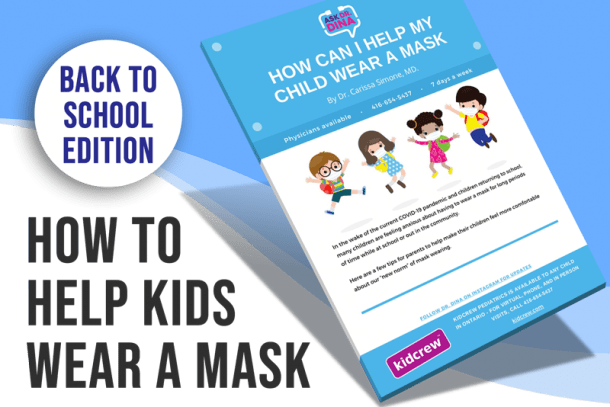Acetaminophen (Tylenol or Tempra) has been a standard treatment choices for fever and pain in children for decades. It works well, and can be purchased over the counter, a big benefit for when your child is sick and you can’t see your doc. But just because it is available with ease, doesn’t mean there is no potential harm to these medicines. Especially with babies and infants, it’s important that you know the correct infant Tylenol dosage to give them!
Why is the correct infant Tylenol dosage for your child so important?
Giving too little medicine won’t take away your child’s fever or pain, but an acetaminophen overdose is serious and can happen pretty easily. Overdose is something we see regularly in the emergency room, and you don’t want your kid to join these stats!
Acetaminophen overdose can lead to liver damage, and even death. If you are concerned about a possible acetaminophen overdose, or notice early symptoms of one such as nausea, vomiting or abdominal pain, please call your local poison control centre or see your doctor. There is an antidote, but you’ll need to be seen ASAP.
How do you calculate the correct dose?
The correct Infant Tylenol dosage is based on your child’s weight, and is administered at 10-15 mg per kg every 4 – 6 hours.
You need to know your child’s most recent weight. This is key.
So, if your child weighs 10kg (or 22lbs, as 1 kg x 2.2 = lbs), you take 10 kg x 15mg/kg = 150 mg. You child can have 150mg of acetaminophen safely every 4 hours. Easy!
You can give a dose acetaminophen every 4-6 hours, so that means a maximum of 6 times in 24 hours.
Things you should beware of when giving Tylenol:
On the side of the box, you will notice a range for dosing. For example, the box may say, ‘for weight 10-20 lbs, give 80 mg’. Pay attention to two things here:
- This is a wide weight range
- It is listed as POUNDS (no kg)
- The amount of medicine is listed in milligrams (MG), not milliliters (ML).
You need to figure out your child’s weight in kilograms, and the corresponding MG into ML, so you know what to give your child.
A big problem and source of confusion: some bottles of acetaminophen are 80 mg = 1 ml, and some are 100mg = 5ml. This is a big difference. So if you are used to giving your child 5 ml of the 100mg=5ml solution, and you pick up a new bottle that is 80mg=1ml, and you give 5ml, you have now given 80mg x 5ml = 400mg, not the 100mg you were intending. Make sense?
Please ensure you read the bottle, and pay attention to how many MG equals how many ML.
Always use the syringe that comes with the product to ensure the right dose. A household spoon or measuring cup is simply not accurate, as demonstrated in multiple studies. The syringe will give you the right dose.
Is Tylenol necessary?
Ask whether your child really needs acetaminophen. Fever is a helpful strategy for your body to fight infections. I prefer to treat discomfort. Your child may have a 38 degree Celsius temperature but is happy and playful and drinking well. This child may not need medicine. Alternatively, a child with teething pain and with no fever may benefit from a dose for comfort.
There’s no need to treat every fever, but pay attention to how your child is feeling and behaving. When in doubt, see your doctor. Remember: fever medicines can take 30-60 min to work. Avoid giving more medicine if you have already given the appropriate dose. Wait it out a bit. Give it time.
Quick Tips:
- Know your child’s weight
- Dose 10-15 mg per kg
- Only use every 4-6 hours
- Use the measuring syringe
- Store medicines out of reach and properly closed
Dina is a wife, mother of 4, and adrenaline junky. She loves to share children’s health information from her professional and personal experience. More About Dr Dina.










